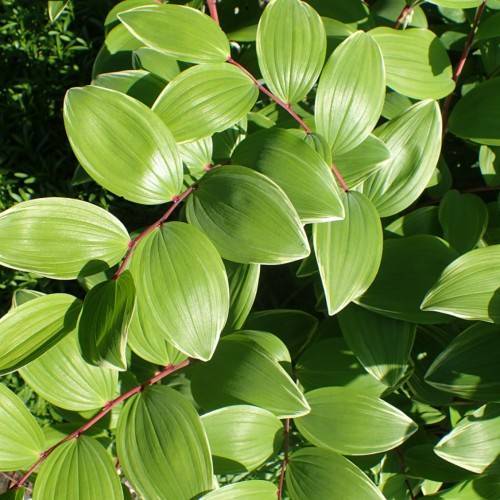
Solomon's seal
Polygonatum odoratum var. pluriflorum 'Variegatum'
Cycle:
Herbaceous Perennial
Watering:
Frequent
Hardiness Zone:
3 - 8
Flowers:
Flowers
Sun:
Part shade,full shade
Leaf:
Yes
Growth Rate:
Low
Maintenance:
Low
Care Level:
Medium
watering
Solomon's seal is a hardy plant species that can tolerate a variety of soils and conditions. During the active growth period, Solomon's seal requires consistently moist soil. To achieve this, water regularly and deeply and allow the soil to dry out slightly in between. Watering should generally occur on a weekly basis during the active growing season. Water until the soil is damp but not wet, and never allow the soil to become soggy. During the winter months, when the plant is dormant, reduce watering accordingly. Do not water more than once every other week during dormant periods.
sunlight
Solomon's Seal needs to be in bright, indirect sunlight for optimal growth. This species will grow best in a location that receives anywhere between 4 and 6 hours of sunlight each day. It's important to note, however, that direct sunlight can cause damage to the plant's delicate foliage. Therefore, choose a spot that receives partial shade or full shade for the best results. Additionally, be sure to check the amount of sunlight during the hottest part of the day (usually mid-afternoon) and adjust accordingly.
pruning
Solomon's Seal (Polygonatum odoratum var. pluriflorum 'Variegatum') should be pruned in early spring, before the new growth appears. Make sure to remove any weak, damaged, dead, or diseased stems, as well as any crossed or criss-crossed growth. It is important to be careful when pruning Solomon's Seal as it is a slow-growing species and vigorous pruning can result in a lower flower count. Pruning should be done with a pair of bypass pruners and all pruned limbs should be removed from the area.
